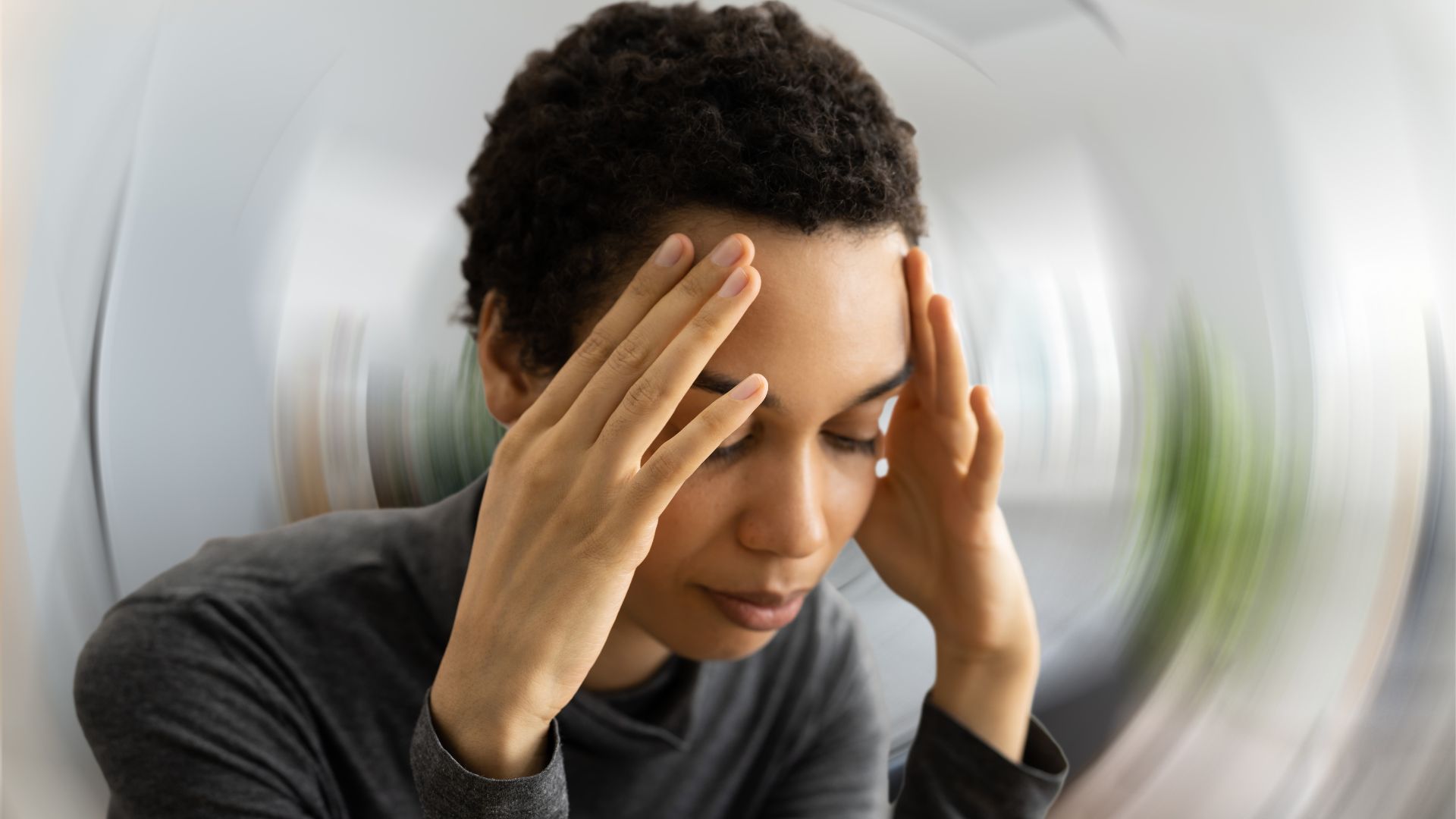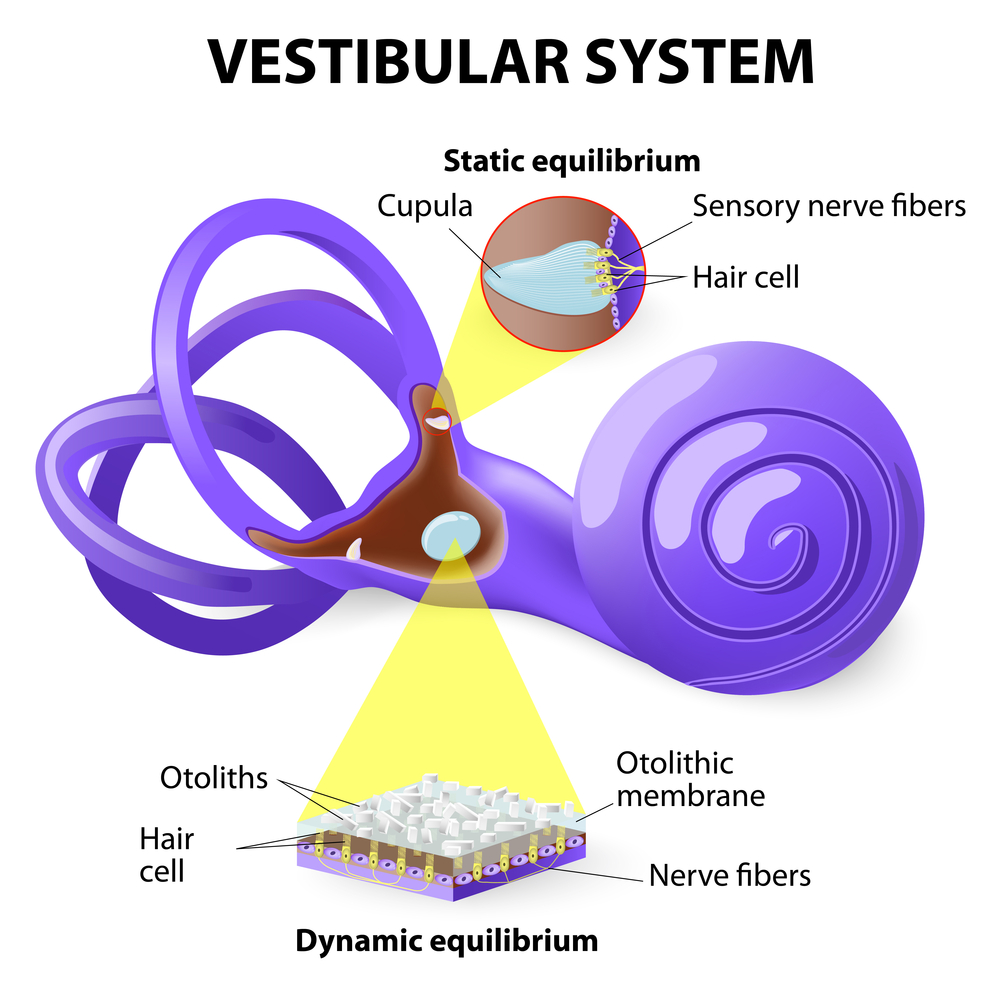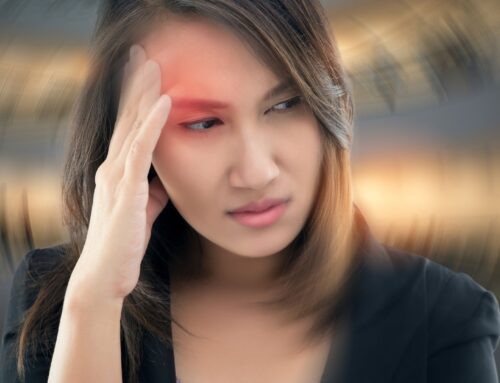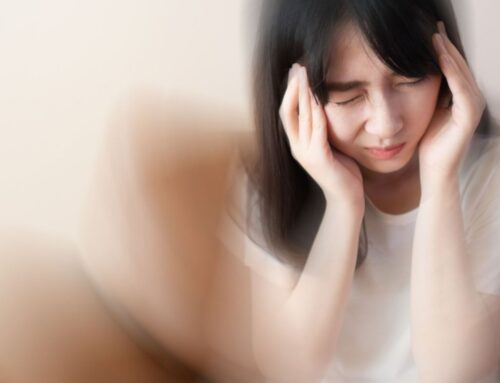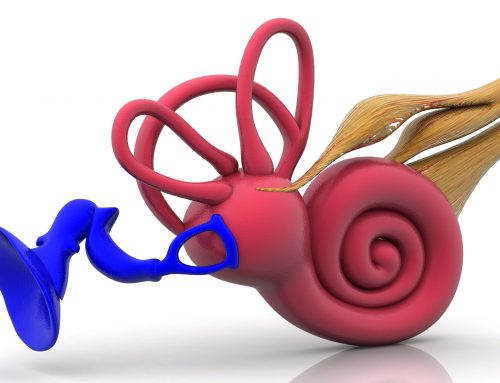Vestibular disorders can cause inappropriate eye movements, balance challenges, and symptoms such as vertigo (feeling like “the room is spinning”) or dizziness. Vestibular disorder treatment has been shown to improve postural stability, control, and dynamic gait in individuals with vestibular disorders.
A link between your ear and brain, called the vestibular system, helps you keep your balance. When this system is affected by injury, degeneration or medications, it can cause vestibular disorder. Common vestibular disorders include:
- Benign peripheral paroxysmal vertigo (BPPV)
- Vestibular neuritis
- Unilateral or bilateral vestibular loss
- Meniere’s disease
In this article, we will look at the anatomy of the vestibular system, common causes of bilateral vestibular loss, signs and symptoms, and physiotherapy assessment and vestibular disorder treatment for this condition.
Table of Contents
- What is Bilateral Vestibular Loss?
- What is the Vestibular System?
- Common Causes of Bilateral Vestibular Loss
- Symptoms of Bilateral Vestibular Loss
- Bilateral Vestibular Loss Assessment and Treatment
What is Bilateral Vestibular Loss?
Bilateral vestibular loss (or hypofunction) occurs when the function of the vestibular system is affected in both ears. As a result, it can lead to severe balance challenges, visual blurring, and feeling dizziness or “off-balance” in day-to-day activities.
What is the Vestibular System?
The vestibular system is comprised of components in the ear and brain that help to provide information of where the head is oriented. This information about head orientation helps to guide appropriate eye movements and balance reactions.
This system is comprised of:
- The peripheral vestibular apparatus – located in each ear. As the head turns, it causes fluid (also known as endolymph) to move within the ear. This is detected by how it moves specialized hair in the ear.
- The central nervous system (CNS) – this information, combined with other sensory information like touch and vision, is then processed by different areas of the brain and central nervous system, to estimate where the head is in space and/or how it is moving.
- Motor output – with this information, the CNS then adjusts eye, neck, and/or body position/movement accordingly.
Common Causes of Bilateral Vestibular Loss
Bilateral vestibular loss can occur for several reasons. The most frequent causes are:
- Ototoxic medication: There are some medications (certain classes of antibiotics like Gentamycin or Streptomycin) that are toxic to the specialized hair cells in the inner ear. In high doses, such drugs have been shown to consistently damage the hair cells in the inner ear, however, ototoxicity has also been shown to occur in 3% of the population even in normal doses.[i]
- Age related degenerative changes: In populations over 75 years of age, there is a 35% decrease in the ability of the vestibular system to process quick head movements.[ii] This occurs due to the degenerative changes in both vestibular systems.
- Combination of pathologies: It may also occur when another vestibular pathology (for example, neuritis or labyrinthitis) occurs in both ears.
- Trauma: Head traumacan directly damage the vestibular organ or vestibular nerve, as well as the brainstem and the visual and oculomotor pathways.
Symptoms of Bilateral Vestibular Loss
The main signs and symptoms include:
- Balance problems – with both vestibular systems impaired, information about the head position/orientation is affected and/or lost. This results in inappropriate balance and postural responses, especially with the eyes closed or in the dark.
- Oscillopsia – a vision problem in which the individual perceives objects in the environment to jump or bounce around when they are still.
- Dizziness – individuals will often report feeling dizzy or off balance when they are moving.
- Physical deconditioning – due to the severe balance challenges and dizziness, individuals with bilateral vestibular loss often limit their physical activity or participating in other social/recreational/occupational activities. This indirectly causes physical deconditioning for the affected individual.
Bilateral Vestibular Loss Treatment
Subjective assessment: This part of the assessment involves a series of questions about a patient’s symptoms, past medical history, and effects on daily, occupational, and recreational activities. It allows for the physiotherapist to determine the most appropriate tests and treatment plan for the client.
Objective assessments: These tests look at the function of the vestibular system and how it affects an individual’s balance, walking, visual processing, and other daily activities. Some tests that may be included are:
- Peripheral vestibular testing: These tests often assess eye movement and control in relation to head position and movement.
- Static balance tests: These tests put the individual in different conditions. Individuals with bilateral vestibular loss usually have more difficulties when they perform these tests with their eyes closed and/or standing on a foam pad as this increases the demand on the vestibular system to perform the right balance reaction.
- Gait assessment: Therapists also look at how an individual is walking and if they require a gait aid to walk in household or community settings.
From this information, in addition to other assessments that may be performed, physiotherapists create a treatment plan for you. This may include the following:
- Therapeutic exercises: Exercises prescribed will focus on substituting visual and somatosensory (feeling of touch on the ground, or how the joint is moving) to improve stability when standing/walking, or when moving the eyes. These exercises may cause dizziness at first but should improve over time.
- Aerobic Exercises: Often following the onset of vestibular symptoms, you might limit your physical activity to avoid triggering your symptoms. This can affect your overall conditioning. A physiotherapist can help with providing an exercise program to improve your overall conditioning without triggering your vestibular symptoms.
- Environment and lifestyle modifications: These may include adapting the home environment or prescribing the most appropriate gait aid (for example, a walker or cane) to reduce the possibility of a fall.
Previous published studies have demonstrated improvement in postural stability, control, and dynamic gait in individuals that perform specific vestibular and balance exercises.[iii][iv]
Our team of physiotherapists can help with developing a vestibular disorder treatment program specific for your symptoms and goals. To learn more about vestibular rehabilitation therapy, connect with one of our clinicians at Propel Physiotherapy in Etobicoke, Pickering, or Peterborough.
References
[i] Hewitt WL. Gentamicin ototoxicity in perspective. Postgrad Med J. 1974; 50(suppl 7):55.
[ii] Herdman SJ (Editor). Vestibular Rehabilitation. F.A. Davis Co., Phil, PA, 2000.
[iii] Brown KE et.al. Physical therapy outcomes for persons with bilateral vestibular loss. Laryngoscope, 2001, Oct. 111(10):1812-1817
[iv] Aasi M et.al. Effects of vestibular rehabilitation on postural control. Acta. Otolaryngol., 1997, 582:116-120
Written by

